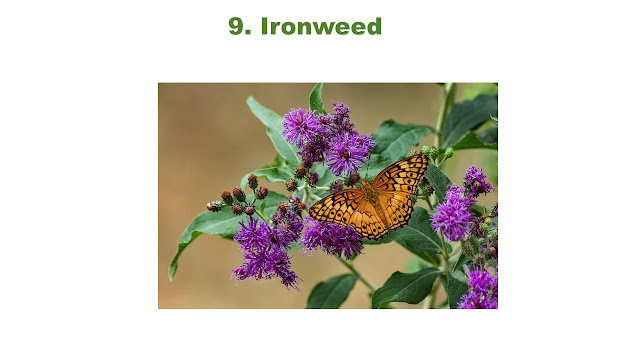Fill your garden with colorful butterfly flowers.
It's common sense - the more butterfly flowers you have in your garden, the more butterflies you'll see. If you have a large yard, it can be difficult to figure out how to fill the space without breaking the bank. The answer? Butterfly flowers growing from seeds! Butterflies love the abundance of nectar flowers that are easy to start from seed. Many are free to self-sow, meaning these flowers will return year after year at no cost to you.
In addition to the options we've compiled below, native wildflowers are a great way to attract butterflies on a budget. Contact your local county extension office for a list of wildflowers found in your area. A note: use caution in "wildflower mixes". They often include species that are not suitable for all regions.
1. Marigold
This ancient garden standby deserves more attention in the butterfly garden. Choose varieties with fully double flowers for their ability to hold water between the petals, making them a great place for thirsty butterflies to sip some nectar and drink nectar. Start marigolds indoors eight weeks before you transplant.
2. Mexican sunflower
Also known as the Mexican sunflower (although it's not a true sunflower), this butterfly magnet is perfect for that warm sunny spot in your garden. It likes dry soil once it's established, and the bright orange petals seem to draw every butterfly in the neighborhood.
3. Zinnia
Oh, the variety of zinnias! Singles, doubles, solid and broken colors, tall and short – the list goes on. Growing zinnias from seed is very satisfying. They germinate in a day or two and bloom in a few weeks. You can start them indoors six weeks before you plant outside, or sow them directly into your garden after the last frost or in the spring.
4. Coneflower
Coneflowers are a favorite of butterflies and gardeners. These tall sturdy flowers thrive all season long, and since they are perennial, they return year after year. Start coneflowers early so they have time to bloom in the first season, or sow in fall.
5. Sunflower
Many people grow sunflowers for the birds and are amazed by the butterflies that visit the large flowers! Sunflowers come in so many heights and sizes now that it's easy to find one (or more) to fit your garden space, even containers. Start them indoors for a couple of weeks to give them a chance to germinate, or sow the direct seed very deep so they won't be eaten by birds or other animals.
6. Cosmos
These flowers are among the first that many gardeners grow from seed. They're easy and don't require any special preparation - just plant cosmos seeds in the spring, where they'll grow! Don't be surprised when they self-seed and return year after year. There are two varieties (C. bipinnatus and C. sulphureus) each available in a variety of colors, so choose the one(s) that best suit your garden.
7. Goldenrod
It's important to include nectar-producing butterfly flowers that bloom throughout the fall. These were especially useful for the emigrant monarchs on the long journey to Mexico. Goldenrod is a great late nectar flower, and very easy to grow. Give it plenty of sun and room to reach the sky. There are many varieties of Goldenrod, so look for ones in your area.
8. Salvia
There are hundreds of species of salvia (also known as sage), most of which are excellent at attracting butterflies. Choose natives to your area for direct seeding in the spring or start indoors four to six weeks before planting.
9. Ironweed
Ironweed's tall spikes act as a calling card for butterflies. Butterflies that bloom from late summer to fall provide nectar for butterflies that stay after the prime of summer is over. Ironweed is sown directly in the garden in late fall or early winter. Choose breeds native to your area.


















0 Comments
Thanks